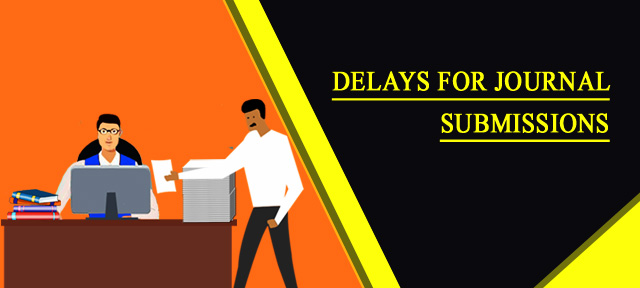Delay in a journal publication is common angst for most authors. Getting a publication is a long-drawn process and each step of the process takes time. The entire process is both challenging and often frustrating for authors. Delayed publication affects the effectiveness or impact of one’s work. It also affects one’s career movement which is often measured in terms of a number of publications.

Reasons for delays
The main reason for the delay is the numerous channels a manuscript has to go through in order to get published. Once an article is submitted to the editors, it goes through the first round of checks. Then, it is sent for peer-review which takes its own sweet time given most peers are extremely busy professionals on their own rights. A review suggestion is sent back to the author who then takes time to revise the article. The entire process is again repeated till it is finalized for publication. Even after an article is selected for publication, there may be delays based on journal printing dates.
How to reduce delays
Once you understand the process, you can work on addressing some key factors that can help speed up the process at each stage.
Follow Instructions: One must follow specific instructions for authors issued by journals to prevent delays at the editing stage. If the journal suggests a certain format of document or submission, ensure your submission follows those specifications. If the journal advises certain sections (like an abstract, blurbs, summary, number of sections, etc), you must write your article exactly in that order. Word limits are to be strictly adhered to. Referencing or citation norms, instructions about charts and graphs are other critical pieces of advice that you must be accurate with. Once an editor finds an initial submission to be up to the mark, they are more likely to process them faster.
Get professional help if needed: It is advisable to engage professional editors for at least a proof-reading before submission. Proofreading can pick up inconsistencies, grammatical errors, formatting mistakes much better. Consider it as a proxy editorial review before submission that saves time and effort for you.
Respond to Peer review: A response to peer review must be well structured. Besides making the necessary edits in the manuscript, share a covering letter or a separate document that lists the comments from the peer review and what action you have taken on it. This then becomes an index that helps both editor and reviewer with your edits and helps fasten proceedings.
Communicate with Editor: Keep a channel of communication open with the journal editor at all points of time. You can mail for follow-up, or even gentle nudges when you feel things are not moving as they should. Your communication with the editor must be polite and formal; long angry mails do more damage than good!
Be realistic: You have to be patient and realistic about time. Have an idea of the average time of publication from your peers and set your expectations according to this harsh reality.

